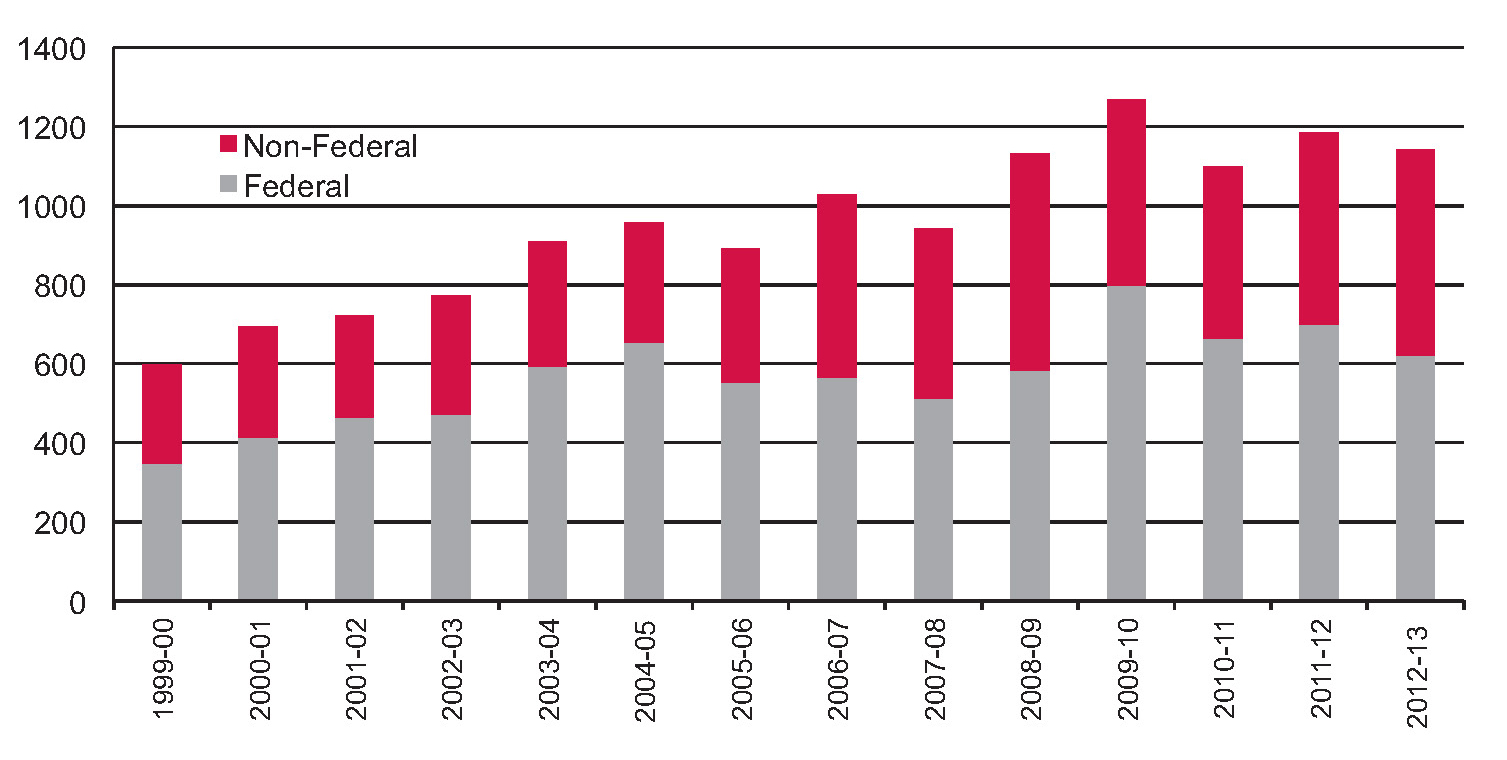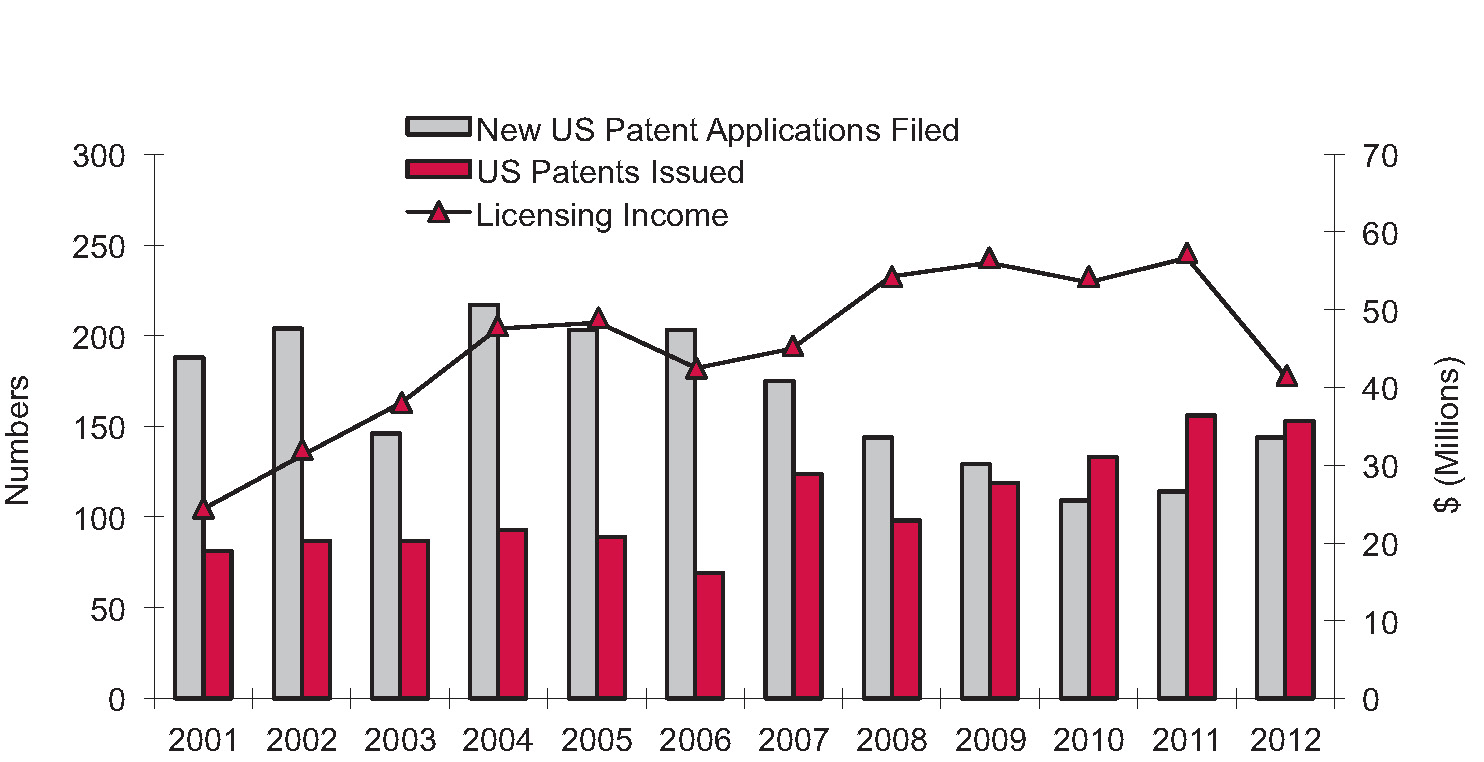Fifth-Year Progress Report
Invest in scholarly domains in which we have existing or potential strength and impact
- Despite flat research expenditures nationwide, UW–Madison ranked number three among all U.S. universities, according to the National Science Foundation. Total research and development expenditures neared $1.2 billion.
- Teams led by UW physicists played crucial roles in two main experiments at the Large Hadron Collider that discovered the particle that is central to the process by which matter has mass — the existence of which was predicted by two theoretical physicists and earned them the Nobel Prize for Physics in 2013. The intensive data analysis needed to find the particle relied on high-throughput computing resources through the Open Science Grid, led by a UW computer scientist.
- British magazine Physics World named the UW’s IceCube project recipient of the 2013 Breakthrough of the Year award in December. In November, the IceCube Collaboration had published data in Science on the first evidence of extremely high-energy cosmic neutrinos. UW–Madison is the lead institution on the IceCube Collaboration, which has 275 physicists and engineers in countries around the world.
- In January, the campus approved the reorganization of the Arts Institute and designated it as the first division on the UW–Madison campus solely dedicated to the arts — their administration, outreach, performance, teaching, and learning. The new structure will help the arts realize their full potential and ensure that their valuable contributions can grow and be celebrated.
- Contributing expertise in areas such as advanced manufacturing, controls, and high-performance computing, UW–Madison is playing a key role in a $320 million initiative to create and apply cutting-edge technologies to advance U.S. global competitiveness in manufacturing. A newly formed Digital Lab for Manufacturing formally received $70 million in funding during an announcement by President Obama in February.
- In October, the university launched a competition of undergraduate and graduate students across the country to submit proposals and business ideas that address challenges in 21st-century agriculture. The contest awarded $100,000 to the winning proposal — the largest amount to date for an agriculturally focused student competition.
- In an effort to increase the “China literacy” of undergraduates, the Wisconsin China Initiative launched a China and Global Economics Lecture Series and, in partnership with the Nelson Institute for Environmental Studies and the School of Human Ecology, brought to campus a photography exhibit about landscape change in China. The initiative also distributed $30,000 in grant money to fund UW–Madison faculty-led workshops across the China region.
- Nearly 440 students from across campus pursued undergraduate, capstone, and graduate/professional global health certificates, learning to understand, collaborate, and address local and world health challenges from a variety of perspectives.
- Acknowledging the work of the Wisconsin Alzheimer’s Disease Research Center in the fight against Alzheimer’s disease, the National Institutes of Health awarded the center a second five-year grant of $7.5 million. The first grant supported the development of a pool of 500 research volunteers, many with a strong parental history of the disease.
- UW faculty and staff continued to pursue cutting-edge research and share their findings with a global audience. Among their efforts:
- A team of scientists led by a UW geoscience professor in February revealed data that confirm that the Earth’s crust formed at least 4.4 billion years ago, just 160 million years after the formation of our solar system. A microscopic zircon crystal used by the group to form its conclusions has been confirmed to be the oldest known material of any kind formed on Earth.
- More than 70 students, faculty, and staff from the humanities and the sciences gathered at a monthly Humanities Hackathon and used computational techniques to uncover unexpected connections and patterns to music, visual art, literature, and historical works.
- A study conducted by the Waisman Center’s Center for Investigating Health Minds guided teachers in practicing mindfulness and found they were better able to reduce their own levels of stress and burnout. Teacher stress is a major concern for school districts nationwide.
- Using more than 2 million images collected by NASA’s orbiting Spitzer Space Telescope during the last decade, a team of Wisconsin scientists stitched together a dramatic 360-degree portrait of the Milky Way, providing new details of our galaxy’s structure and contents.
Supporting charts
Note: If you are unable to read the charts below, please contact the Office of Quality Improvement. Staff there will help explain the content of any chart in this progress report.
Extramural Awards by Source (Millions of Dollars)

Technology Transfer
